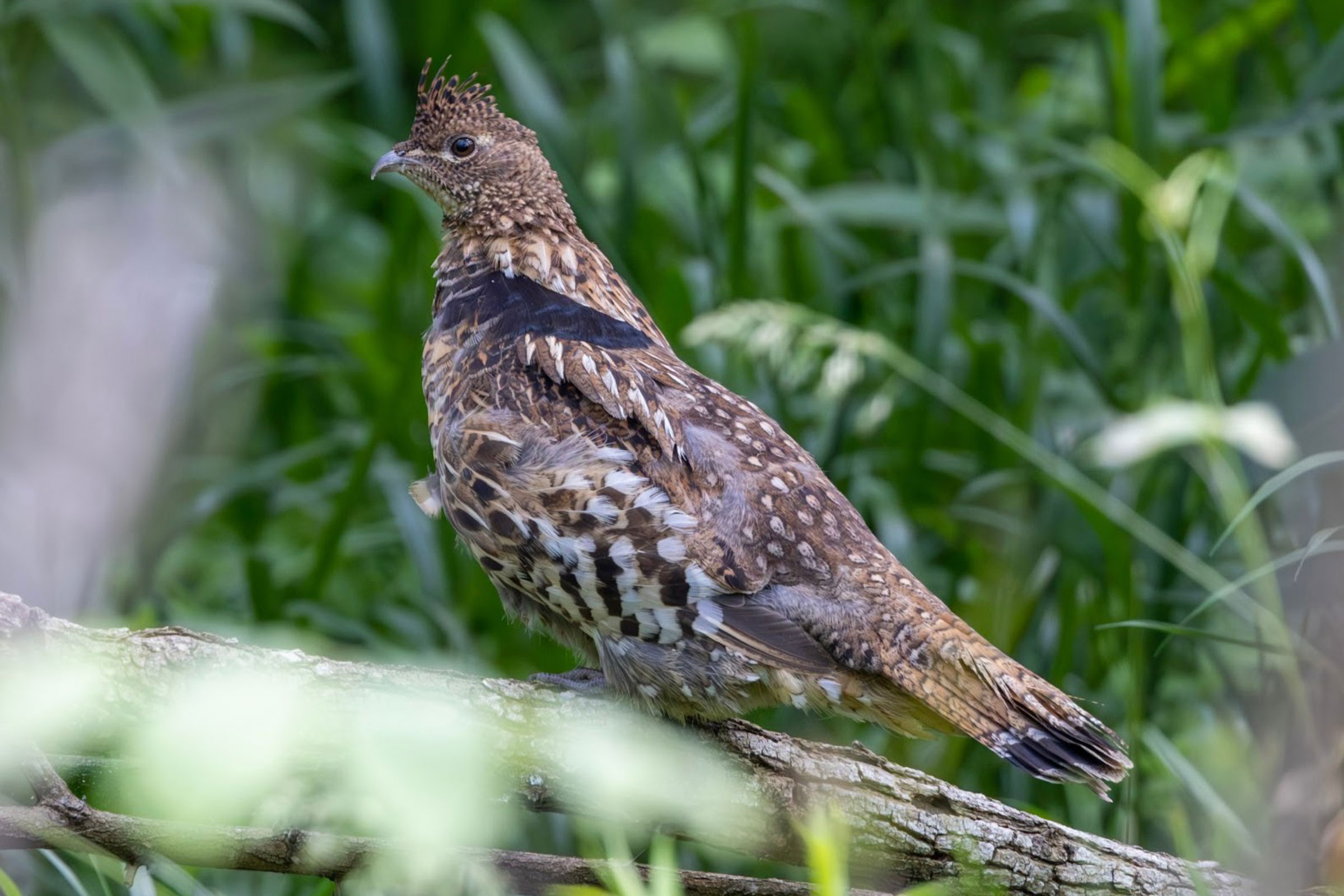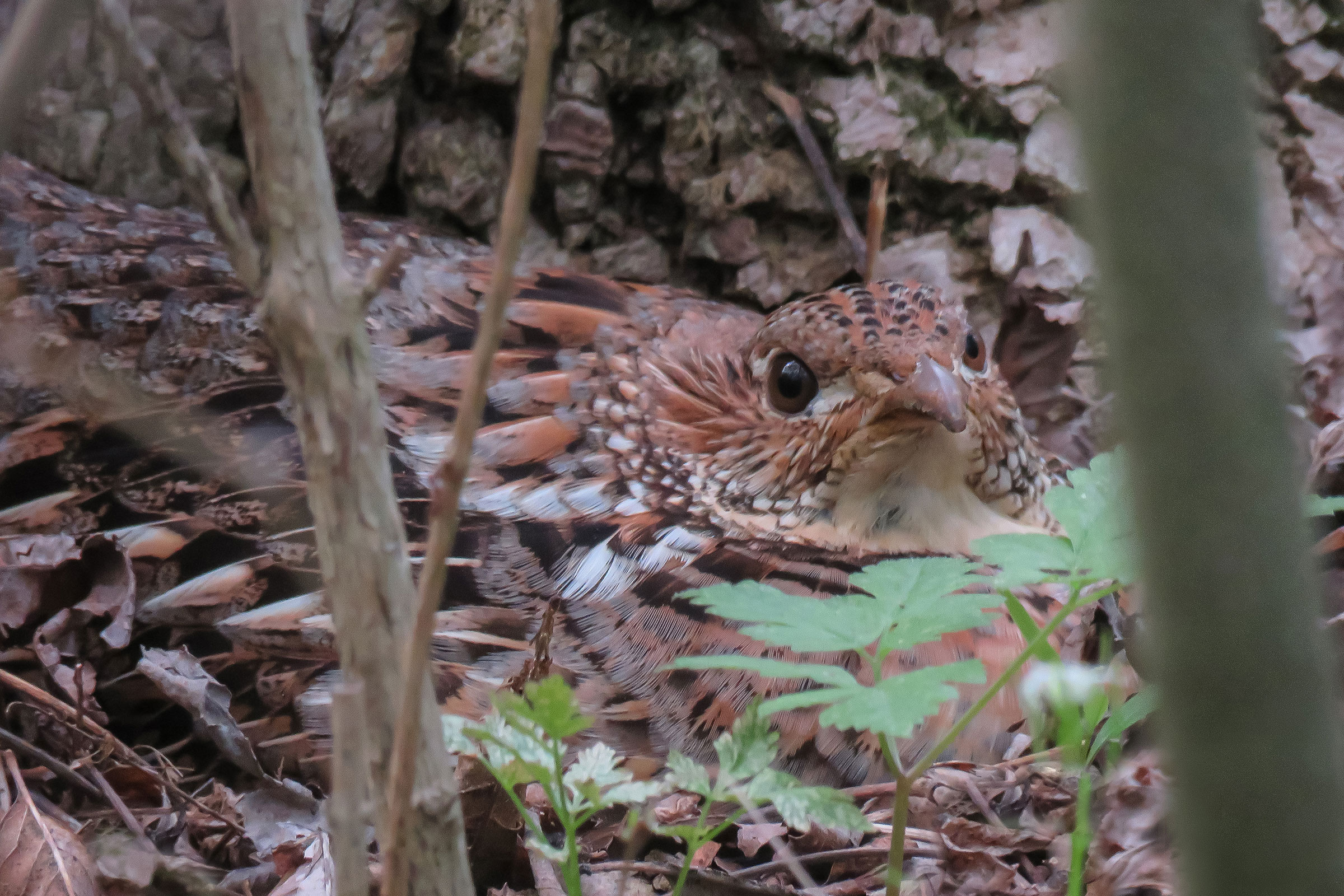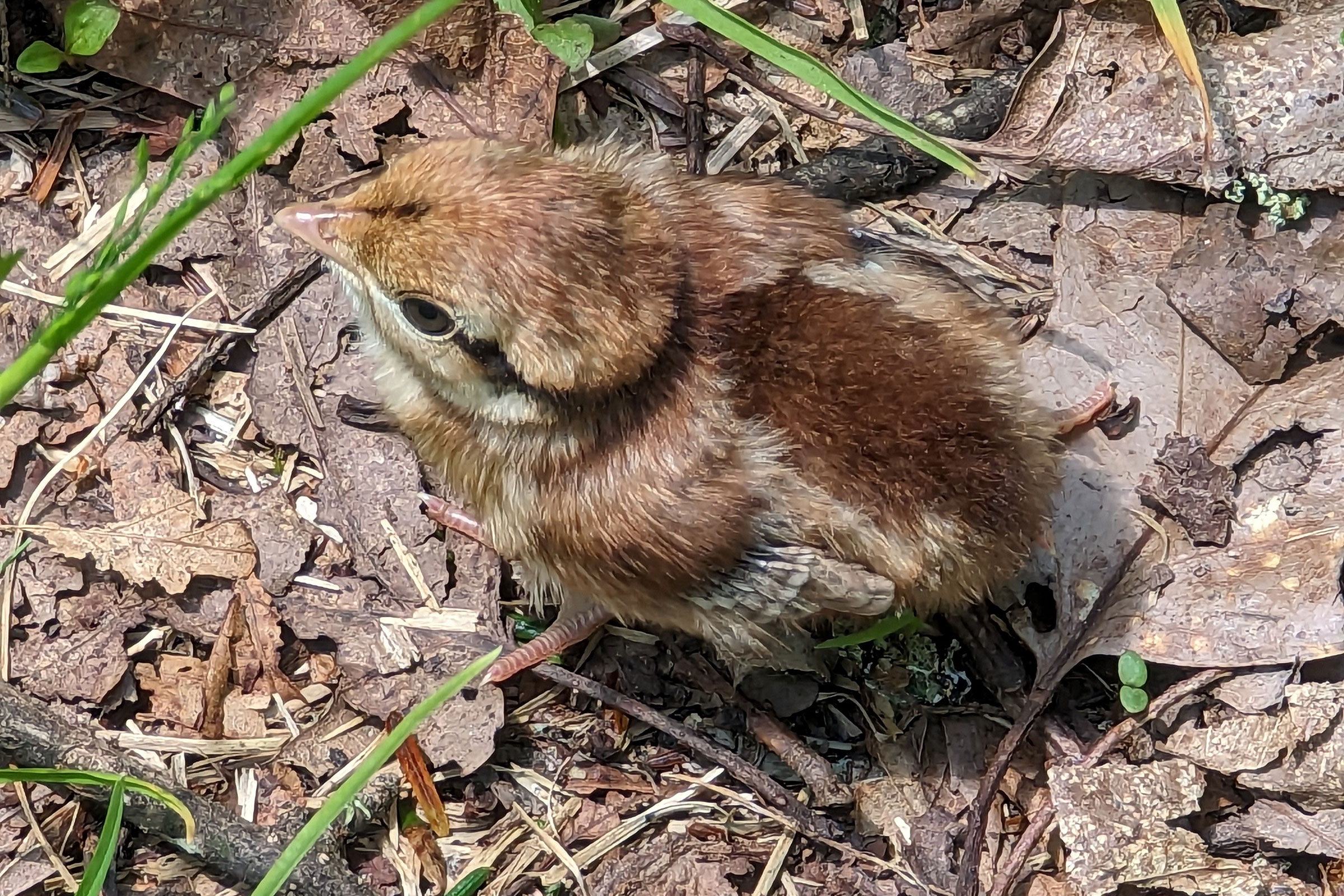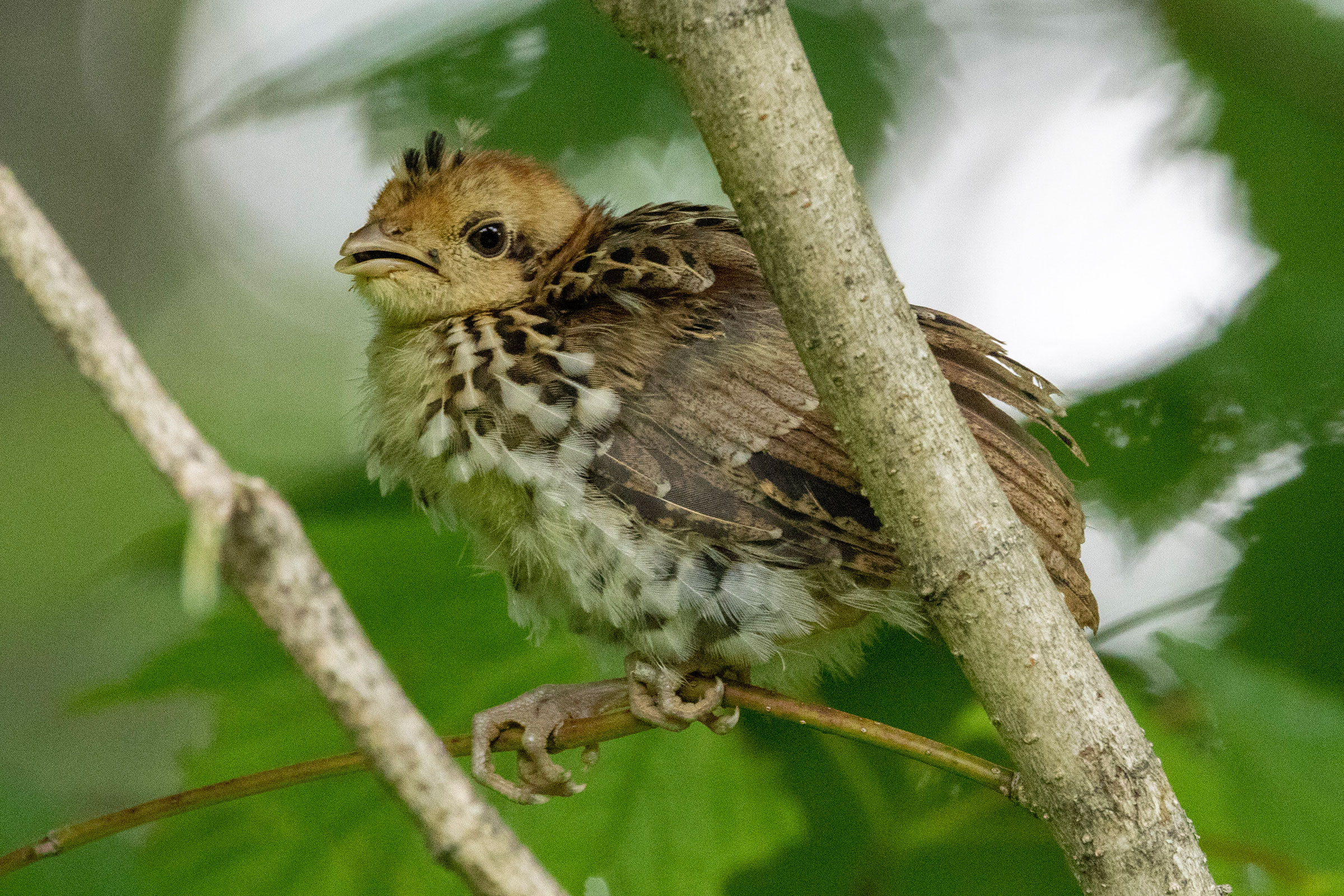Introduction
The Ruffed Grouse is the quintessential forest bird. Unlike other Virginia gamebirds, such as the Wild Turkey (Meleagris gallopavo) or Northern Bobwhite (Colinus virginianus), the Ruffed Grouse rarely leaves the protection of forested habitats. In southwestern Virginia, Fearer and Stauffer (2004) found that the Ruffed Grouse uses forests with a mix of early successional habitat and mature forest with understories consisting of thick shrubs. This species’ cryptically patterned plumage and deliberate movements allow it to slip through the forest unnoticed, until a predator or person approaches too closely, causing the bird to flush in a great startling whir of wings. Interestingly, the Ruffed Grouse Society, the only national organization solely dedicated to grouse conservation, was founded in 1961 in Highland County, Virginia.
Breeding Distribution
Because the Ruffed Grouse requires extensive forest for nesting and foraging, the species is confined to the slopes and ridges of the Mountains and Valleys region (Figure 1). It is most likely to occur in Augusta, Bath, Highland, and Rockingham Counties. The likelihood of Ruffed Grouse occurrence increases as elevation increases and is also positively associated with the proportion of forest cover in a block.
Between the First and Second Atlases (Figures 1 and 2), throughout its range in Virginia, the likelihood of the Ruffed Grouse occurring substantially decreased (Figure 3).
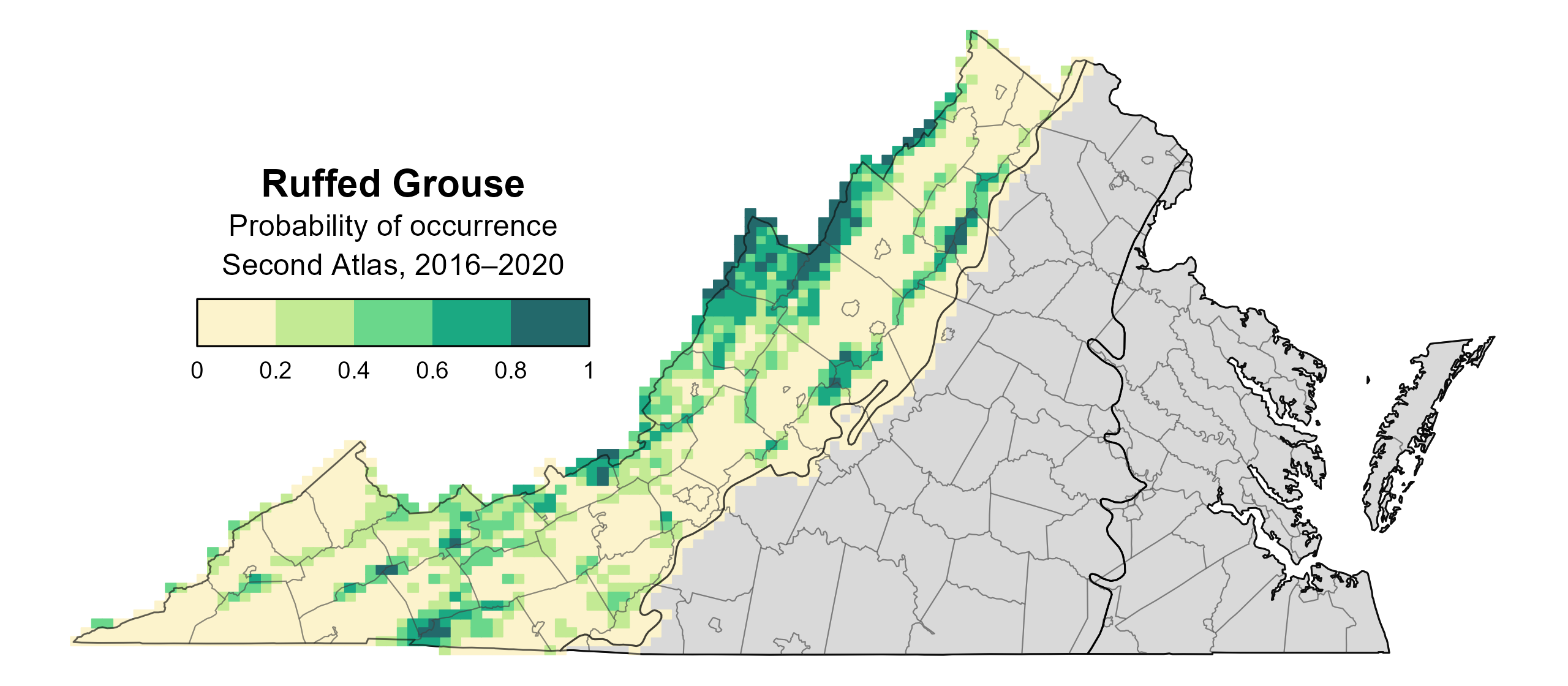
Figure 1: Ruffed Grouse breeding distribution based on probability of occurrence (Second Atlas, 2016–2020). This map indicates the probability that this species will occur in an Atlas block (an approximately 10 mi2 [26 km2] survey unit) based on environmental (including habitat) factors and after adjusting for the probability of detection (variation in survey effort among blocks). Blocks in gray are outside the species’ core range and were not modeled.
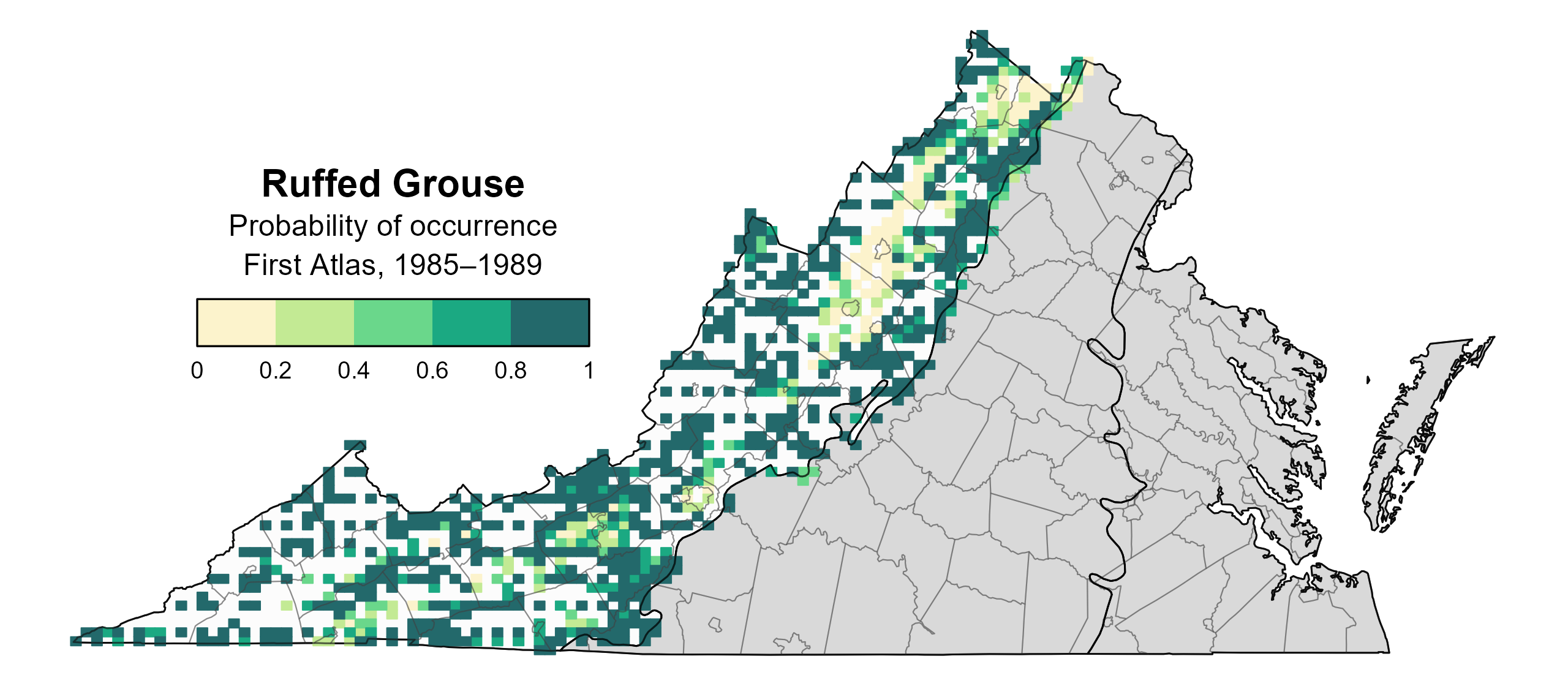
Figure 2: Ruffed Grouse breeding distribution based on probability of occurrence (First Atlas, 1985–1989). This map indicates the probability that this species will occur in an Atlas block (an approximately 10 mi2 [26 km2] survey unit) based on environmental (including habitat) factors and after adjusting for the probability of detection (variation in survey effort among blocks). Blocks in white were not surveyed during the First Atlas and were not modeled. Blocks in gray are outside the species’ core range and were not modeled.

Figure 3: Ruffed Grouse change in breeding distribution between Atlases (1985–1989 and 2016–2020) based on probability of occurrence. This map indicates the change in the probability that this species will occur in a block (an approximately 10 mi2 [26 km2] survey unit) between Atlas periods. Blocks with no change (tan) may have constant presence or constant absence. Blocks in white were not surveyed during the First Atlas and were not modeled. Blocks in gray are outside the species’ core range and were not modeled.
Breeding Evidence
Ruffed Grouse was a confirmed breeder in 38 blocks and 18 counties and a probable breeder in an additional 11 counties (Figure 4). During both Atlas periods, confirmations were primarily documented in the Mountains and Valleys region; however, some breeding observations were recorded in the Piedmont region during the First Atlas (Figure 5).
The earliest confirmed breeding behavior was observed on May 1 when occupied nests were recorded, while recently fledged young were noted from May 20 – September 14 (Figure 6). Observing evidence to confirm Ruffed Grouse breeding is difficult. Bowl shaped nests lined with leaves are built at the base of a tree or stump on the forest floor, where they blend in with their surroundings. Additionally, Ruffed Grouse chicks are precocial, meaning that they leave the nest almost immediately after hatching when they are about the size of an adult’s thumb. They are surprisingly mobile and can move up to a quarter mile per day by the time they are three or four days old. These characteristics also make it difficult to observe breeding characteristics (Rusch et al. 2020).
For more general information on the breeding habits of this species, please refer to All About Birds.
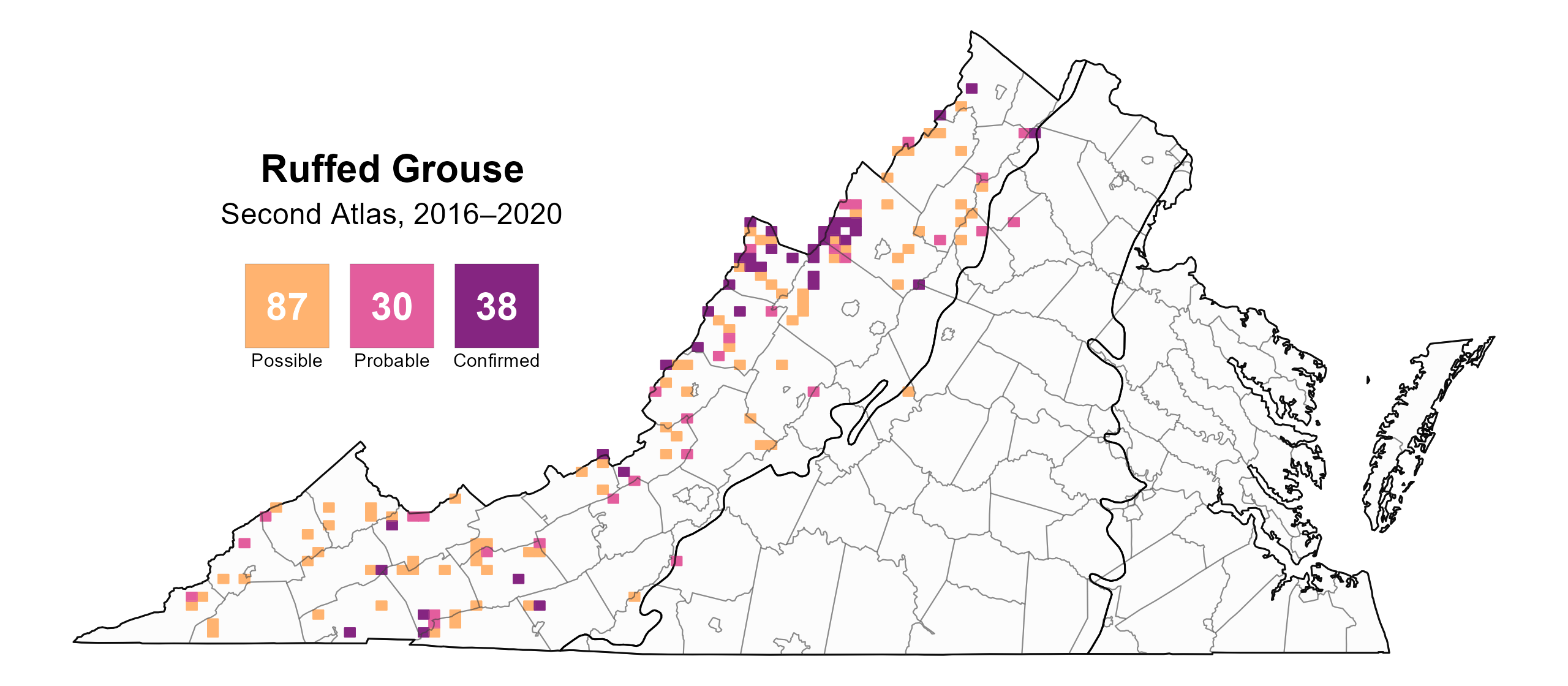
Figure 4: Ruffed Grouse breeding observations from the Second Atlas (2016–2020). The colored boxes illustrate Atlas blocks (approximately 10 mi2 [26 km2] survey units) where the species was detected. The colors show the highest breeding category recorded in a block. The numbers within the colors in the legend correspond to the number of blocks with that breeding evidence category.
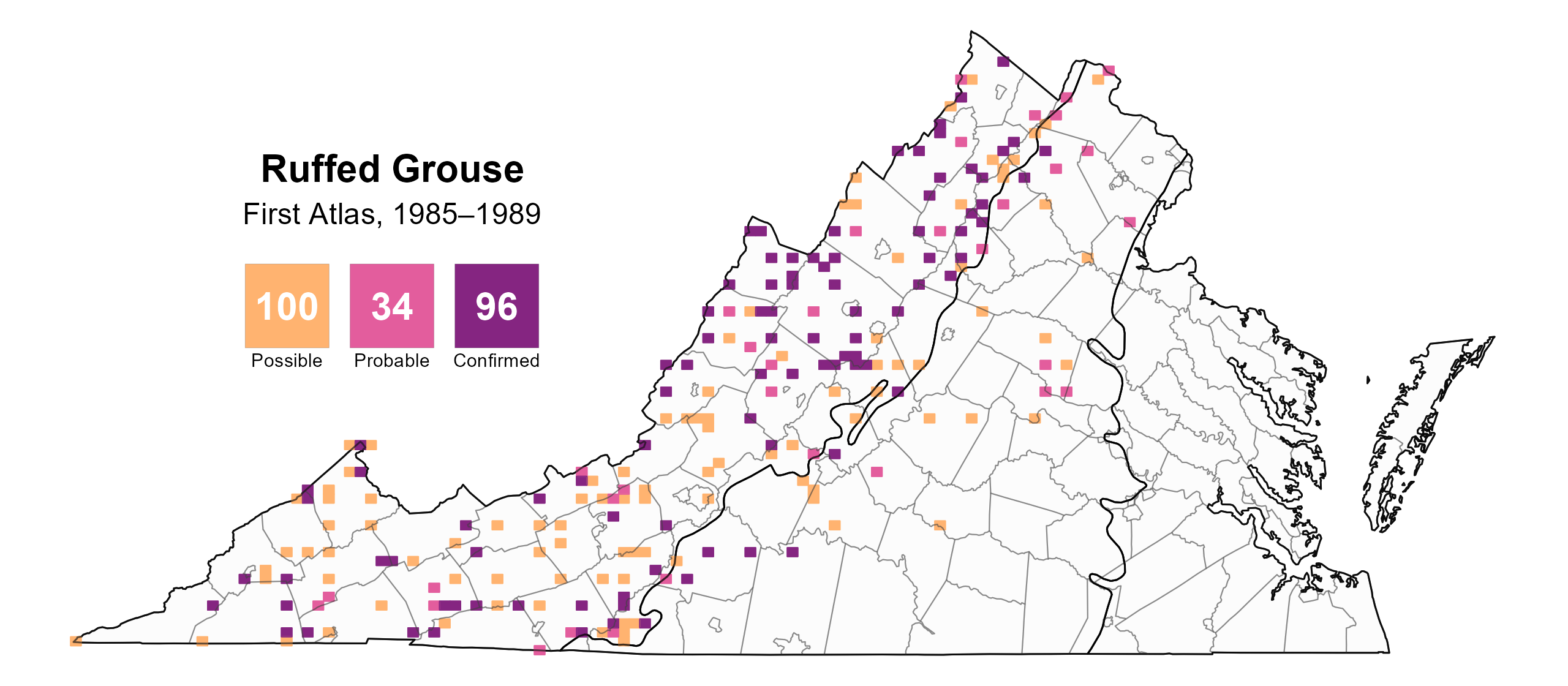
Figure 5: Ruffed Grouse breeding observations from the First Atlas (1985–1989). The colored boxes illustrate Atlas blocks (approximately 10 mi2 [26 km2] survey units) where the species was detected. The colors show the highest breeding category recorded in a block. The numbers within the colors in the legend correspond to the number of blocks with that breeding evidence category.

Figure 6: Ruffed Grouse phenology: confirmed breeding codes. This graph shows a timeline of confirmed breeding behaviors. Tick marks represent individual observations of the behavior.
Population Status
There were too few detections during the point count surveys to develop an abundance model for the Ruffed Grouse. Additionally, the North American Breeding Bird Survey (BBS) does not provide credible populations trends for Virginia or regionally. However, the Virginia Department of Wildlife Resources’ (VDWR) 2023–2024 flush survey results showed that Ruffed Grouse flushing rates have declined by approximately four percent annually since 2002 (Dye and Martin 2024).
Conservation
Persistent declines in Virginia’s Ruffed Grouse population are related to habitat loss and the presence of West Nile Virus (Dye and Martin 2024). Ruffed Grouse require forests of multiple age classes for successful breeding (Rusch et al. 2020). In Virginia, many forest systems are older-aged and lack adequate amounts of young forest for brood rearing (Dye and Martin 2024), particularly in western Virginia where adequate amounts of forest cover exists for grouse. Given its decline, the 2025 Virginia Wildlife Action Plan classified the Ruffed Grouse as a Tier III Species of Greatest Conservation Need (High Conservation Need) (VDWR 2025). Additionally, multiple partners, such as Ruffed Grouse Society, Appalachian Mountains Joint Venture, The Nature Conservancy, National Wild Turkey Federation, U.S. Department of Agriculture (USDA) Natural Resources Conservation Service, USDA Forest Service, and VDWR, are currently working to create young forest on public and private lands through sustainable forest management practices (Harper et al. n.d.).
Interactive Map
The interactive map contains up to six Atlas layers (probability of occurrence for the First and Second Atlases, change in probability of occurrence between Atlases, breeding evidence for the First and Second Atlases, and abundance for the Second Atlas) that can be viewed one at a time. To view an Atlas map layer, mouse over the layer box in the upper left. County lines and physiographic regional boundaries (Mountains and Valleys, Piedmont, and Coastal Plain) can be turned on and off by checking or unchecking the box below the layer box. Within the map window, users can hover on a block to see its value for each layer and pan and zoom to see roads, towns, and other features of interest that are visible beneath a selected layer.
View Interactive Map in Full Screen
References
Dye, M., and K. Martin (2024). 2023–2024 Ruffed Grouse status summary. Virginia Department of Wildlife Resources, Henrico, VA, USA. https://dwr.virginia.gov/wp-content/uploads/media/Ruffed-Grouse-Status-in-Virginia-2023-2024.pdf.
Fearer, T. M., and D. F. Stauffer (2004). Relationship of Ruffed Grouse (Bonasa umbellus) to landscape characteristics in Southwest Virginia, USA. Wildlife Biology 10:81–89. https://nsojournals.onlinelibrary.wiley.com/doi/10.2981/wlb.2004.012.
Harper, C., B. C. Jones, D. M. Whitaker, and G. W. Norman (n.d.). Managing habitats for Ruffed Grouse in the Central and Southern Appalachians. Virginia Department of Wildlife Resources, Henrico, VA, USA. https://dwr.virginia.gov/wp-content/uploads/ruffed-grouse-habitats.pdf.
Rusch, D. H., S. Destefano, M. C. Reynolds, and D. Lauten (2020). Ruffed Grouse (Bonasa umbellus), version 1.0. In Birds of the World (A. F. Poole and F. B. Gill, Editors). Cornell Lab of Ornithology, Ithaca, NY, USA. https://doi.org/10.2173/bow.rufgro.01.
Virginia Department of Wildlife Resources (VDWR). 2025. Virginia wildlife action plan. Virginia Department of Wildlife Resources, Henrico, VA, USA. 506 pp.

